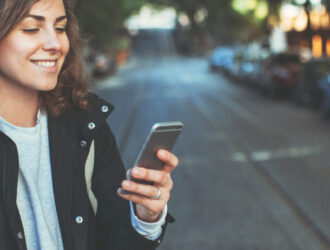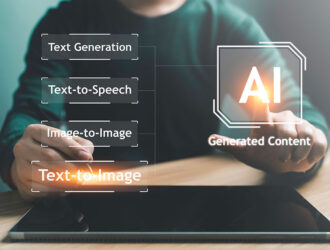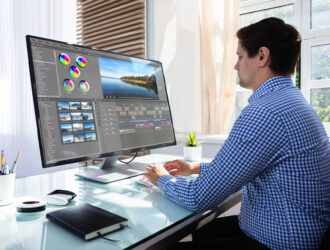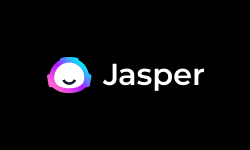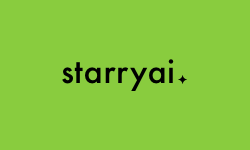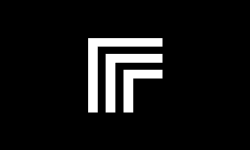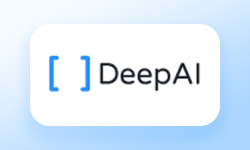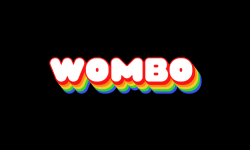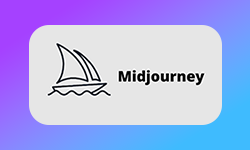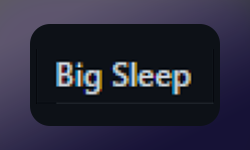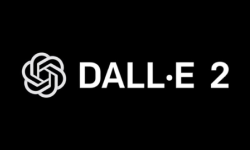What are AI Image Generators?
AI Image Generators are computer programs that use Artificial Intelligence (AI) algorithms to create images from scratch or modify existing ones. These algorithms can be trained on vast datasets of images to learn the patterns and features of the objects or scenes in those images and then use that knowledge to generate new images that look like they could have come from the same dataset.
There are different types of AI image generators, each with its own strengths and weaknesses. Some focus on generating realistic images of objects or scenes, such as faces or landscapes. Others can create abstract or surreal images not based on specific real-world objects.
AI image generators are used in a variety of fields, from video game development and movie special effects to marketing and advertising. They can save artists and designers a lot of time and effort by generating images that can be used as a starting point for their work or by creating variations of existing images that would be difficult or time-consuming to create manually.
How does an AI image generator work?
Here’s a breakdown of how an AI image generator works:
An AI image generator uses deep learning, a type of artificial intelligence that involves training a neural network model on a large dataset of images to learn the patterns and features that are common to certain types of images.
The AI image generator takes a textual description or an initial image as input and passes it through the trained neural network model.
The neural network model then analyzes the input and generates a new image that matches the input description or is similar to the initial image.
During the image generation process, the neural network model may use a variety of techniques, such as convolutional neural networks (CNNs), generative adversarial networks (GANs), or variational autoencoders (VAEs), to create and refine the image.
These techniques involve learning how to transform and manipulate the data in different ways to create new images that match the desired output.
An AI image generator can be a powerful tool for creating unique and diverse visual content quickly and efficiently, and it has a range of applications in various industries.
What are the benefits of an AI Image Generator?
An AI image generator can offer several benefits, including
-
Time-saving:
An AI image generator can create high-quality images quickly and efficiently, saving time compared to traditional image creation methods.
-
Cost-effective:
AI image generators can be more cost-effective than hiring professional photographers or graphic designers for image creation.
-
Creativity:
AI image generators can create unique and diverse images that can be difficult to create using traditional image creation methods, inspiring creativity and exploration.
-
Customization:
Many AI image generators offer customization options, allowing users to adjust the style, color, and composition of the generated images to match their specific needs.
-
Accessibility:
Cloud-based AI image generators can be accessed from anywhere, making it a convenient option for remote teams and individuals.
-
Versatility:
AI image generators can create a wide variety of images, from everyday objects to abstract and surreal compositions, making them versatile tools for creative projects.
Overall, an AI image generator can be a valuable tool for businesses and individuals looking to create high-quality and unique images quickly and efficiently, and it has the potential to save time and resources compared to traditional image creation methods.
What are the limitations of AI image generators?
While AI image generators offer many benefits, there are also some limitations to consider, including –
-
Lack of Control:
Users have limited control over the final output generated by AI image generators, which can be a disadvantage for those who need a specific look or feel for their images.
-
Quality Limitations:
While AI image generators can create high-quality images, the generated images may not always meet the quality standards required for certain professional or artistic projects.
-
Ethical concerns:
The use of AI-generated images raises concerns about the originality and authorship of the images and potential biases in the data used to train the models.
-
Technical requirements:
AI image generators require some technical expertise to use, including familiarity with deep learning concepts and software.
-
Dependence on AI:
Over-reliance on AI-generated images can limit creativity and discourage artistic exploration.
-
Data Limitations:
AI image generators rely on large datasets of images to train their neural networks, and these datasets may not be diverse enough to represent all types of images accurately.
Why are AI Image generators controversial?
AI image generators are controversial for several reasons, including –
-
Originality and Authorship:
The use of AI-generated images raises questions about the originality and authorship of the images. It can be unclear who should be credited as the creator of an image, and there are concerns that AI-generated images may infringe on copyright or intellectual property rights.
-
Bias:
The data used to train AI image generators may be biased, leading to generate images that reflect those biases. This can perpetuate and reinforce harmful stereotypes or discriminatory attitudes.
-
Misuse:
AI image generators can be misused to create fake or misleading images, such as deepfakes, which can be used to spread misinformation or propaganda.
-
Technical limitations:
AI image generators are still limited by technical constraints, such as limited resolution or accuracy, which can make the generated images less useful for certain applications.
-
Dependence on AI:
Over-reliance on AI-generated images can limit creativity and discourage artistic exploration, potentially leading to a homogenization of visual media.
What do AI Image Generators mean for photography?
AI image generators can have both positive and negative implications for photography.
On the positive side, AI image generators can make it easier and more affordable to create high-quality images, which can benefit amateur photographers and small businesses with limited resources. AI-generated images can also inspire creativity and exploration, allowing photographers to experiment with new styles and compositions.
However, AI image generators can also pose a threat to the traditional photography industry, particularly for professional photographers who rely on image creation as their primary source of income. The automation of image creation can reduce the demand for professional photographers, potentially leading to job losses and a devaluation of the craft.
Furthermore, there are concerns about the originality and authorship of AI-generated images, which can impact the value and integrity of photography as an art form. There are also ethical concerns about the potential misuse of AI-generated images, such as for propaganda or deepfakes.
Overall, the impact of AI image generators on photography is complex and multifaceted, and it remains to be seen how they will continue to shape the industry in the future.
How do you make AI-Generated Images?
Making AI-generated images typically involves the following steps:
-
Choose an AI image generator:
There are several AI image generators available, each with its own strengths and limitations. Choose one that best fits your needs and requirements.
-
Provide input:
To generate an image, you need to provide input to the AI image generator. This can be a textual description, such as “a red car on a beach,” or an initial image that the AI will modify or refine.
-
Adjust settings:
Most AI image generators allow you to adjust various settings, such as color scheme, composition, and style, to customize the generated image.
-
Generate the image:
Once you have provided input and adjusted settings, the AI image generator will generate a new image that matches your specifications.
-
Refine and customize:
Depending on the output of the AI image generator, you may need to further refine or customize the generated image to meet your needs.
-
Save and export:
Once you are satisfied with the generated image, you can save it and export it in various file formats for use in your projects.
Problems with text-to-image generation
Text-to-image generation, which involves using AI to generate images based on textual descriptions, can have several problems, including –
-
Ambiguity:
Textual descriptions can be ambiguous, and it can be difficult for AI to capture the intended meaning accurately. This can result in generated images that don’t match the intended description.
-
Limited Vocabulary:
AI models used for text-to-image generation are typically trained on a specific vocabulary, and they may struggle to generate images for words or phrases outside of that vocabulary.
-
Lack of Context:
Text-to-image generation AI models may not have the context or understanding of the real world necessary to generate realistic images. This can result in generated images that are unrealistic or nonsensical.
-
Technical Limitations:
The technology for text-to-image generation is still evolving, and there are limitations in terms of the resolution, quality, and diversity of the generated images.
-
Bias:
The data used to train text-to-image generation AI models may be biased, leading to generating images that reflect those biases. This can perpetuate and reinforce harmful stereotypes or discriminatory attitudes.
-
Ethical Concerns:
The use of AI-generated images raises concerns about the originality and authorship of the images and potential biases in the data used to train the models.

![Unlocking Ahrefs Premium: Get Ahrefs Premium Accounts [100% Free]](https://s44815.pcdn.co/wp-content/uploads/2023/10/Ahrefs-Free-Premium-accounts-2023-330x250.webp)


